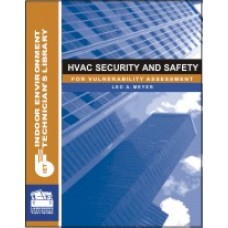
Consider this actual example. Many employees of a state government agency work outdoors in all weather conditions. To show these employees that their work was appreciated, the agency’s executives decided one summer to take cold soda to workers at their job sites and tell them their work was both important and appreciated.
The workers criticized these visits for two reasons. First, they were concerned that citizens would be upset by seeing the workers drinking soda while not working, then judge them to be non-productive and wasting tax dollars.
Second, the executives’ words of appreciation were considered to be meaningless. Most of the workers had been in their positions for many years. In the collective experience of these long-term employees, no agency managers, let alone the executives, had ever before expressed appreciation to workers. Since the tasks they performed were done every year, this expression of appreciation for doing important work well was seen as just another example of ‘flavor of the month’ management practice.
The executives had good intentions. However, their good intentions were not enough. The resources invested to produce a positive effect on the workers created a negative reaction instead. Worse, having the soda breaks in full view of the agency’s customers threatened citizen satisfaction with the agency.
In this situation, an effective method for encouraging good job performance was made ineffective by the way it was used. The method, rewarding employees, can be used by managers in any organization to help create satisfied, loyal customers. Rewards are used when managers want employees to repeat job performance that meets or exceeds customer expectations.
A reward is a consequence that occurs after an employee’s job performanceandmakes that performance happen more often. Whether a consequence functions as a reward depends on its effect. If an employee’s job performance is followed by a consequence and the job performance occurs more often, then that consequence was a reward. On the other hand, if the job performance doesn’t happen more often, then the consequence was not a reward.
Rewarding employees for their job performance that meets or exceeds customer expectations is important because:
• It tells employees what standards their job performance must meet.
• When employees know that customers expect a particular level of performance, they’ll be more cooperative about performing at that level than if a performance standard seems to be based on a manager’s whim.
• Rewards improve employee job performance.
• The need to discipline employees is reduced because employee job performance meets customer expectations more often. This creates a more pleasant work environment for managers and their employees.
• Customers’ expectations are more likely to be met by employee job performance even when a manager isn’t present.
There are many ways to reward employee job performance. Some involve financial expense, such as a gift certificate. This article is limited to five types of free rewards:
Appreciation:Saying thanks or expressing appreciation to an employee.
Example: “I appreciate how quickly you …”
Bankshot:Asking someone of higher rank, status, or authority to reward an employee instead of giving the reward yourself.
Example: A manager asking his vice president to praise an employee.
Body Expressions:Hand signals or facial expressions that mean approval.
Examples: Smile, thumb up, forming a circle with thumb and index finger.
Praise:Complimenting an employee’s job performance.
Examples: Well done! Super job! Excellent work!
Preferred Work Assignment:Tasks an employee likes to do.
Examples: More freedom to make decisions, greater variety of assignments.
Some managers say they don’t use rewards because they don’t work. When the consequences managers use as rewards don’t increase the frequency with which employee job performance meets customer expectations, it often is because the consequences were used in a way that makes them ineffective as rewards. How a consequence is used determines its effectiveness as a reward. There are three rules for effectively rewarding employee job performance.
If-Then rule:If an employee’s job performance meets or exceeds customer expectations, then reward the employee. On the other hand, if an employee’s job performance doesn’t meet customer expectations, then do not reward the employee.
Quick rule:Reward job performance that meets customer expectations as soon as practical after the performance occurs.
Variety rule:Change what you do to reward an employee for job performance that meets or exceeds customer expectations. Using a variety of rewards prevents any one reward from losing its effectiveness due to overuse.
These are the steps to prepare for and give effective rewards for job performance that meets customer expectations.
Prepare to give effective rewards:
1.Ask prospects and customers what they expect from your company. For example, find out what features and benefits of your products or services are important to your customers. Also, ask customers how they expect to be treated by your employees.
2.Tell employees the standards their job performance must meet to match customers’ expectations.
3.Observe the job performance of an individual employee or a work group and solicit comments from customers about how well their requirements are met by the job performance of your employees.
4.Decide how closely employee job performance meets customer expectations.
Give effective rewards:
5.If customer expectations were met, tell individual employees or work groups exactly what was done well and how their job performance benefits customers and the company, then deliver the reward using the rules of If-Then, Quick, and Variety.
The following is an example of effectively giving a reward.
Manager of HVAC distributor to parts counter salesperson:
“Phil, last month I let everyone who talks with our customers and their employees know that customers have told me they don’t want our staff shooting the breeze with their employees because that makes their employees non-productive. During the past few days, including just now, I’ve observed some of the times that you’ve talked with our customers on the phone and here at the counter. Each time you limited yourself to talking only about what they needed. By not BSing with our customers’ employees you help them stay productive. That makes their managers - who are our customers - happy. And happy customers are more likely to keep using us, giving all of us more job security. I appreciate that you’re not shooting the breeze with our customers’ employees.”
If their job performance that meets or exceeds customers’ expectations is not rewarded, employees are unlikely to consistently perform at that level. When this happens, managers typically complain to each other about those employees whose job performance doesn’t meet customer expectations. Yet these managers may have (inadvertently) created the very situation they complain about.
To make matters worse, they may blame the employee by saying the employee “isn’t motivated,” “has a bad attitude,” “is lazy,” or “just doesn’t care about our customers.” However, all the employee might need is recognition for job performance that meets customers’ expectations.
Rewards help to inform employees that their work meets customers’ expectations. Further, job performance that is rewarded is likely to be repeated. When each employee more consistently satisfies customers, it helps to improve a company’s competitive position because satisfied customers are more likely to come back.
Publication date:12/03/2007






